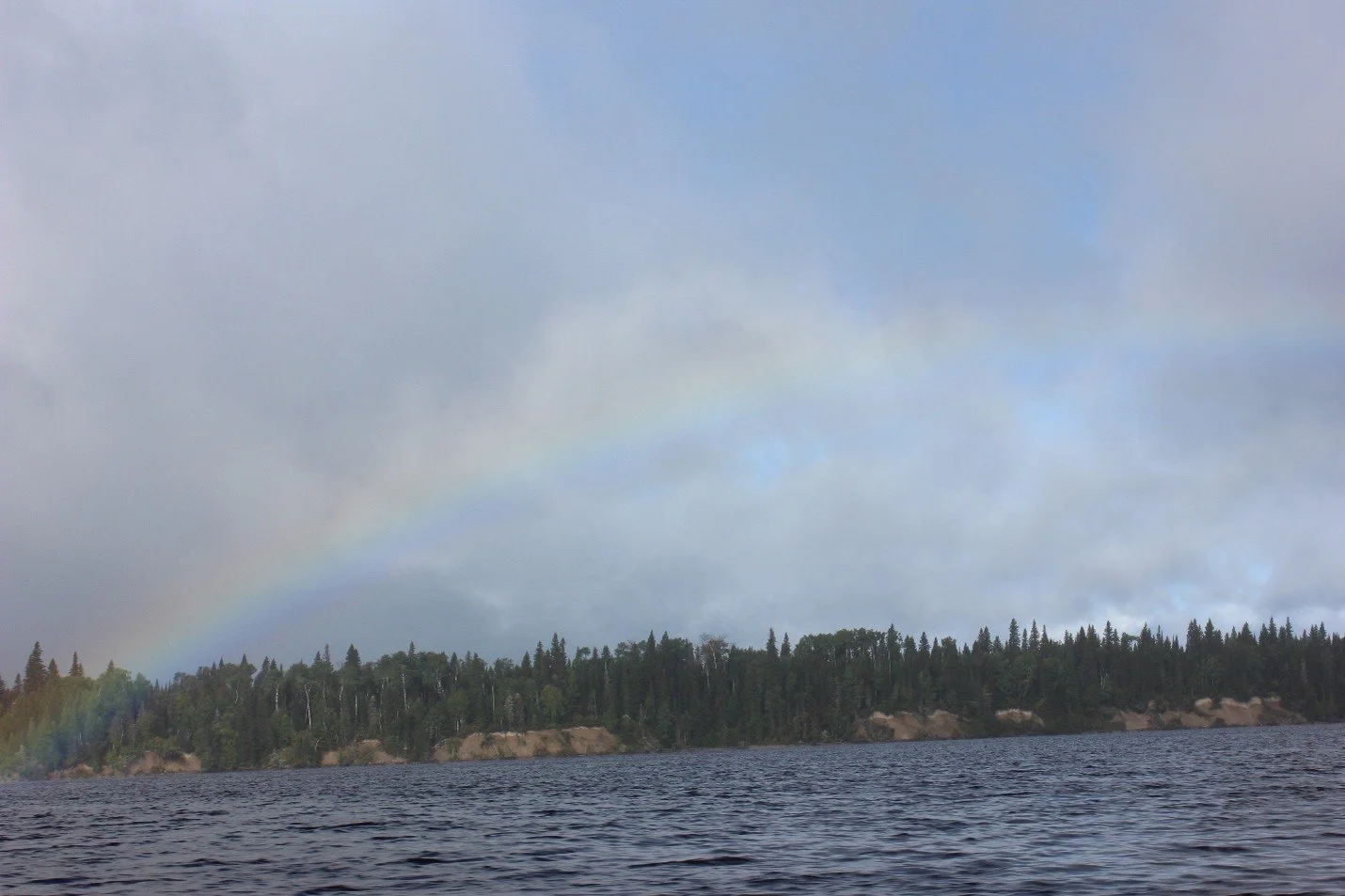Stories from fall fieldwork on the mattagami river
The research that is done by the Learning from Lake Sturgeon partnership requires data collection from our research sites – and that is exactly what we went to collect early this month on our fall fieldwork trip! Connie, Alysha and Allison (WCS Canada) travelled to the research area north of Kapuskasing, to meet with Jennifer (MCFN Resource Protection) to complete this fall fieldwork.
This trip was also a great opportunity for youth involvement – and we were joined by Meegwyn and Melinah who learned these lake sturgeon fieldwork skills during two days. The sharing of skills and knowledge from the research project with local youth is a goal of the partnership, and provides youth with stewardship skills to protect and monitor the Moose Cree Homelands.








So, what did fieldwork look like?
To start off – fieldwork looked like a lot of cold rain and high winds. Weather can often be difficult to predict, and while not comfortable, we were still able to access all the areas we needed to visit. The general work that we completed is as follows:
Identify the location of a receiver already deployed (put out in nature) to gather data from previous seasons
Travel to these saved GPS points via boat with the assistance of our wonderful boat guides, Fred and Roger Simard
Find the wire cable anchored to shore – these are tied around trees and rocks, with flagging tape nearby to help us locate them!
Check if the receiver is still attached or has been dislodged – this took sometimes took extensive digging in sand and searching to locate them!
Pull up receivers (with very heavy weights) using a winch into the boats
Downloading data using a Bluetooth connection, and replacing the batteries within the receivers
Putting the receivers back out to gather more data for the next year!
We also put out new receivers, built new anchors, and cleaned up any old equipment from our research while we were out!
What kind of data did you collect and how will it be used?
The receivers gathering data are known as acoustic receivers. When a tagged lake sturgeon swims by, the tags from the lake sturgeon ‘PING’ and the receiver records the time and date that the individual lake sturgeon was nearby. Some tags also transmit extra information about the lake sturgeon, including how deep the fish is, and how fast it is swimming. As the lake sturgeon travel through the hydroelectric stations where our research is occurring, we are able to monitor their movement patterns to better understand their behaviour in this human-impacted environment.
When we return to the office after fieldwork, there is a lot more work to do with this data to understand the lake sturgeon. We will need to offload the collected data to a larger database which includes other movement data from lake sturgeon collected in past years and visualize it using a coding software. This will provides us with the information to learn from lake sturgeon under the surfaces of the water in the Lower Mattagami River.
Conclusion
Overall, this trip was an excellent opportunity – for youth and employees alike – to learn valuable fieldwork skills to support the ongoing lake sturgeon work within the Moose Cree Homelands. The rain was not given the chance to dampen our spirits, as we spent the weekend laughing and learning together on the Lower Mattagami River.
(Left to right: Back: Roger Simard (Guide), Front: Allison McKenzie (Youth and Community Engagement Coordinator, WCSC), Connie O’Connor (Director ONB, WCSC), Alysha Riquier (Freshwater Field Technician, WCSC), Melinah Rickard (Youth Participant), Meegwyn Philip (Youth Participant), Jennifer Simard (Director OPG Relations, MCFN), Fred Simard (Guide)
Interested in participating in future youth events – like fieldwork? Send us a message on the CONTACT US page.








